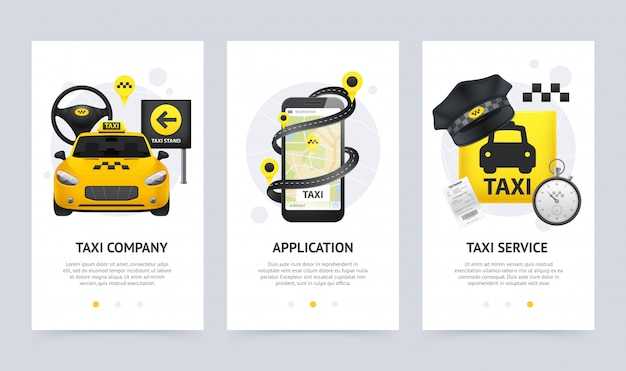Use the Adelaide Taxi Fare Calculator to estimate your ride cost instantly. Enter pickup and drop-off details to generate a fare estimate in seconds. The tool relies on live rate data and distance to produce a clear figure for your next trip in transportation across Adelaide.
The calculator pulls information from licensed providers, adds time and distance factors, and includes any added charges such as airport fees or night-time surcharges. It also shows card withdrawals so the final total remains transparent before you confirm the ride.
For foreign travellers or local first-timers, the tool helps you compare options without leaving the page, and it updates as rates change so you always have a reliable forecast before you ride. The satss signals indicate peak zones and guide you toward calmer windows for travel.
Plan ahead and save time and money. You can input multiple pickup points, see cost variations, and adjust details to see how the total shifts. This approach keeps you in control and helps you always pick an optimal option for your trip.
Base Fare and Flag Fall in Adelaide Taxis

Recommendation: Check the flag fall before boarding; the base fare starts the meter, plus distance and time. While prices vary by operator and year, expect a flag fall around AUD 4.50–5.00, with per-km rates near AUD 2.00–2.40 and waiting time around AUD 0.40–0.70 per minute. For passengers who visit Adelaide, taxis look like a reliable option, especially when walking or buses would come up short. The first charge is the flag fall; the licence rules apply, and the fare will show on the meter, or on your receipt if you purchased via an app. The hirer pays the fare; most taxis accept a bank card, and tips are optional depending on service. Rates may vary along routes.
| Component | Typical Adelaide rate (AUD) | Note |
|---|---|---|
| Flag fall / Base fare | 4.50–5.00 | Charged at start; varies by operator and licence year |
| Per kilometre | 2.00–2.40 | Distance-based; day vs night variations |
| Tempo di attesa | 0.40–0.70 per minute | Applied during delays or stops |
| Airport surcharge | Varies (approx. 6–9) | Applies to rides to/from airport terminals |
Distance Rates: How Kilometres Affect Your Fare

Start with a simple rule: base fare plus a per-kilometre charge sets the cost. For a typical Adelaide taxi, the base fare is around AUD 4.50–5.00 and the per-kilometre rate is about AUD 2.00–2.40. Doing this gives a quick estimate: multiply kilometres by the rate, then add the base. This helps your budget and looks reliable whether you’re paying post-paid, with a visa, or using a sim-only plan while overseas in local traffic.
What drives the distance-based fare
Distance is the main driver, but the route matters. Major routes and detours can add minutes, triggering stand-waiting charges. An airport levy may be added on top of the distance charge in trips that involve the airport. Waiting time is billed per minute, so added stand-waiting can push the total beyond the distance-only calculation. For wheelchair users, wheelchair-accessible taxis might have different base or per-kilometre figures, based on the vehicle type. The maximum payable isn’t fixed by kilometres alone; time, route choice, and added fees all combine. Whenever you check a fare estimate, look for all elements that are based on the route and timing, including any requirement or added payment. This looks like doing the right thing and helps you plan until the trip ends.
Practical steps to estimate and save
Do a quick estimation: estimate the route length in kilometres, multiply by the per-kilometre rate, then add the base fare and any stand-waiting charges. For example, an 8 km route at AUD 2.20 per km plus a base AUD 4.80 yields 17.60 + 4.80 = 22.40; if 2 minutes waiting at AUD 0.60 per minute adds 1.20, total comes to about 23.60. If an prelievo is added, such as an airport levy, include it. Start your trip with a clear route e consider the likelihood of delays; this might look different at peak times or on major routes. For bilancio-minded riders, look for options that minimize stand-waiting. For overseas travellers paying by visa or using a sim-only plan, the distance-based structure stays the same, so you can estimate before you ride. The payment requirement for a post-paid account might show the same breakdown; you just need to checked the meter once you arrive to confirm the final total.
Time-Based Charges: Waiting Time and Traffic Delays
Check the fare estimate before you book and budget for waiting time. A transparent upfront quote helps you plan, so youve got a reliable idea of what you’ll pay if the ride stalls along busy streets. Waiting time starts after a 2-minute grace period, with charges of 0.50–1.00 AUD per minute. A 5-minute pause adds 2.50–5.00 AUD; 10 minutes can add 5.00–10.00 AUD, depending on the base fare and distance. If theyre aware of the breakdown, you know exactly where the cost comes from.
Traffic delays affect duration and final fare. On busy corridors around the CBD and along major routes, trips can run 10–20% longer than expected. For a 6–12 km ride, that translates to about 3–6 extra minutes; in extreme congestion, plan for 15–25% more time. During peak days you may want to leave earlier to accommodate these delays, especially when hotels and events cluster in the area.
Use the post-ride receipt to verify exact waiting minutes and add-ons. This is highly useful when you compare offers from different operators or when you’ve got meetings at hotels, entertainment venues, or around popular districts. If you travel with sim-only cards or a reliable telecommunications network, you’ll enjoy smoother live estimates and fewer data gaps that can affect time reporting. Card payments simplify final settlement, and a stable network keeps the app in sync with the meter, so you’ve got accurate data throughout the ride. The entertainment options in-app can be enjoyed without draining data, thanks to thoughtful offers from network partners, including Korean telecommunications providers.
How charges are calculated
Base fare plus distance determines the ride cost, plus waiting time and any tolls or surcharges. Wait times are billed after the grace period, so plan to leave earlier if you’ve got appointments at hotels, airports, or events. If you leave late or the driver detours, the meter captures those minutes and adds them to the final total. With clear time-and-distance breakdowns, you can anticipate costs in advance and adjust plans along the way, making the process friendly and predictable for you.
Night and Peak Hour Surcharges in Adelaide
Book outside peak hours to keep costs down. Rides after dark carry a night surcharge, and weekday demand creates peak-hour rates on busy corridors open to major routes across the city.
Surcharges appear on the meter or in fare estimates as a line item. They can be a fixed amount or a percentage of the base fare, depending on the operator’s accreditation. In Adelaide, expect a night charge for late-evening rides and a peak surcharge during busy weekday windows; the exact figures vary by distance and kilometre travelled, so use a fare calculator for an average view before you ride.
Popular trips such as from the city centre to Glenelg or between CBD hubs and major suburbs can trigger higher evening rates due to demand. The meter shows the extra charges clearly, and you’ll see how kilometres from the origin influence the total. If you want a precise picture, compare open estimates for a ride-on from kiĺometre 0 up to longer distances.
To cut costs, plan on Thursdays when demand patterns shift in many corridors, and consider early bookings to avoid peak windows. Short hops within the inner ring typically stay within the lower end of the range, while longer journeys in peak periods increase the overall cost.
Le opzioni di pagamento e di accesso possono influenzare il tuo totale. Alcuni operatori forniscono stime tariffarie in più valute, strumenti dati solo SIM o ricevute aperte per aiutarti a tenere traccia. Assicurati di ricevere una ricevuta chiara che mostri gli incrementi del tassametro, le tariffe ed eventuali supplementi, e conservane una copia per i tuoi archivi. Se gestisci le spese tramite una banca come Westpac o utilizzi una carta di trasporto, verifica la compatibilità con l'operatore scelto prima di viaggiare.
In pratica, pianifica in anticipo, usa il calcolatore di tariffe per confrontare i costi da da la tua origine a kilometre le pietre miliari della distanza e scegli percorsi che riducano al minimo l'esposizione di punta. Comprendendo l'accesso al contatore, le strutture tariffarie dei conducenti e le tipiche finestre notturne, manterrai le medie prevedibili ed eviterai picchi a sorpresa nei principali viaggi attraverso Adelaide.
Tasse aeroportuali e suburbane che potresti incontrare
Verifica sempre prima il supplemento per il prelievo in aeroporto; questa tariffa fissa viene aggiunta alla tariffa e appare nel risultato della tua stima, aiutandoti a pianificare bene viaggi di valore. Ciò si applica a tutte le località nei quadri statali e del Commonwealth, così sai cosa aspettarti prima di viaggiare.
Quali commissioni aspettarsi
- Supplemento per il prelievo in aeroporto: un importo fisso che in genere varia da 3 a 5 AUD quando si entra o si esce dal comprensorio aeroportuale; si applica alla maggior parte dei tipi di veicoli e delle aree di copertura ed è chiaramente indicato nei risultati della tariffa.
- Addebiti per attesa e sosta: il tempo di attesa si accumula dopo un breve periodo di tolleranza; le tariffe tipiche sono di circa 0,60-1,50 AUD al minuto, con un'opzione di sosta separata dall'attesa standard.
- Tariffe basate sulla distanza (chilometriche): le tariffe al chilometro variano in base alla classe del veicolo; i taxi standard spesso applicano circa 1,20-2,00 AUD al chilometro, quindi le corse più lunghe verso i sobborghi si sommano rapidamente.
- Spese di destinazione o consegna: alcune località vicino a hotel o centri di alloggio possono comportare piccole spese di destinazione; controlla l'app per evitare sorprese.
Consigli per mantenere ragionevoli le tariffe
- Inserisci posizioni precise e verifica la copertura nell'app per evitare risultati gonfiati; la mancata corrispondenza delle posizioni può aumentare il costo totale del viaggio.
- Quando possibile, cerca tariffe aeroportuali fisse; alcuni operatori offrono prelievi aeroportuali a tariffa fissa per una tariffa prevedibile.
- Prenota in anticipo durante i periodi di maggiore affluenza per ridurre i tempi di attesa e i costi di attesa; questo è estremamente utile quando ci si dirige verso hotel o alloggi.
- Confronta le opzioni per un singolo viaggio verso hotel, alloggi o sedi di conferenze per trovare un buon rapporto qualità-prezzo e assicurare che le regole del Commonwealth siano rispettate dal fornitore.
- Verifica sempre il risultato prima di iniziare il viaggio; questo ti aiuta a scegliere il veicolo e il percorso migliori per il tuo viaggio e assicura che vengano indicate le spese richieste.
Tariffa minima, commissioni di prenotazione e oneri fissi
Raccomandazione: Inizia con una tariffa minima di base intorno ai 4,50-5,50 AUD, quindi aggiungi una commissione di prenotazione di circa 1,50-3,00 AUD e qualsiasi costo fisso applicabile al tuo viaggio.
La tariffa minima combina una tariffa di partenza sul tassametro con componenti di distanza e tempo. In pratica, una base di quattro dollari è comune per brevi corse singole, con la distanza e il tempo che spingono il totale verso l'alto man mano che si attraversano blocchi di distanza vicino a cliniche o alloggi in città. La tariffa sul tassametro mostra la tariffa corrente e noterai che la distanza e gli orari di arrivo si aggiornano durante la corsa.
Le commissioni di prenotazione variano a seconda dei gestori e sono attualmente comprese tra 1,50 e 3,00 AUD a corsa. Questa commissione aumenta il totale anche per i viaggi brevi e viene addebitata ogni volta che si prenota un taxi in anticipo o tramite app mobile. Alcuni gestori mostrano un singolo costo fisso che non dipende dalla distanza.
Le spese fisse coprono il prelievo in aeroporto, le spese di fermata e i supplementi di servizio. Gli aeroporti o i punti di prelievo speciali possono aggiungere una tariffa fissa (spesso AUD 3–5), oltre alle spese per fermata nei viaggi più lunghi. Se il tuo punto di arrivo è un lodge o un hotel, considera la distanza dalla porta; pianifica eventuali costi aggiuntivi all'ingresso. Quando conosci i punti di sosta in anticipo, puoi modellare il totale in modo più accurato ed evitare sorprese.
Per rimanere al sicuro, paga con carte o portafogli mobili tramite app affidabili e conferma il totale prima dell'arrivo. Se viaggi attraverso diverse reti del settore, verifica quali tipi di tariffe si applicano al tuo percorso e scegli le opzioni più adatte al tuo budget. Quando possibile, usa le passeggiate per brevi distanze (ove fattibile) e riserva la mancia solo quando il servizio supera le aspettative. Puoi anche controllare i dettagli del percorso su Google Maps per verificare la distanza e i tempi di arrivo.
Come usare il calcolatore tariffario: input, unità e risultato
Inserisci i punti di prelievo e consegna esatti, quindi seleziona chilometri come unità di misura. Il calcolatore si aggiorna istantaneamente, utilizzando le tariffe correnti e qualsiasi sovrapprezzo applicabile per fornire una stima rapida e affidabile.
Ingressi e Unità
I campi di input richiedono posizioni di prelievo e riconsegna precise. È necessario scegliere una valuta e un'unità di distanza. Scegli chilometri (chilometro) o miglia, quindi seleziona il tipo di corsa, se disponibile. Il calcolatore estrae i dati dalle loro reti e applica le regole relative a tariffa base, distanza e tempo. Assicurati che i nomi dei luoghi siano chiari per evitare incongruenze, soprattutto in luoghi affollati dove il traffico appare diverso. Per una maggiore precisione, aggiungi la data e l'ora se l'opzione è disponibile; questo aiuta a riflettere i prezzi di punta e gli schemi attuali che influenzano la stima. Devi rivedere l'input per evitare di spendere più del previsto per una singola corsa o per diversi viaggi.
Per testare alternative, prova diverse posizioni o percorsi e confronta i risultati; questo ti aiuta a pianificare l'opzione più economica per quel giorno.
Comprendere il risultato
Il risultato fornisce una ripartizione: tariffa base, costo per distanza (per chilometro), costi basati sul tempo se applicabili e eventuali supplementi. Il totale mostrato è la stima attuale per il tipo di corsa e il percorso selezionati. Le distanze appaiono nell'unità di misura scelta; puoi passare a un'unità diversa per vedere come cambia la cifra.
Usa il readout per pianificare viaggi in vari luoghi e reti e per gestire le spese nelle giornate intense. Se la stima supera il tuo obiettivo, regola i punti di partenza o di arrivo o il tipo di corsa, quindi riesegui il calcolo per altri viaggi per trovare l'opzione migliore.



Commenti